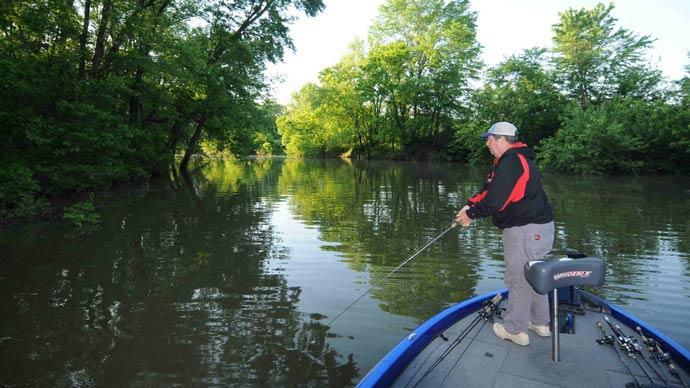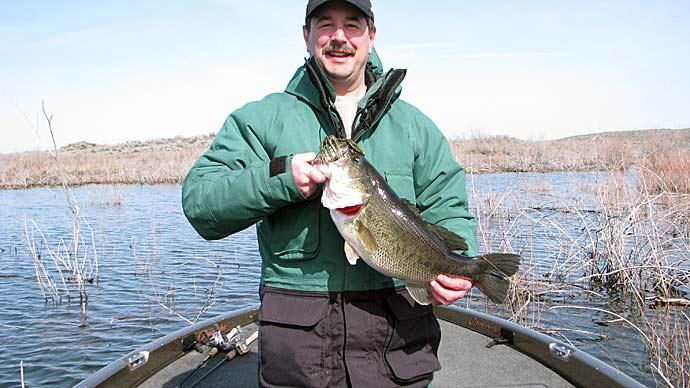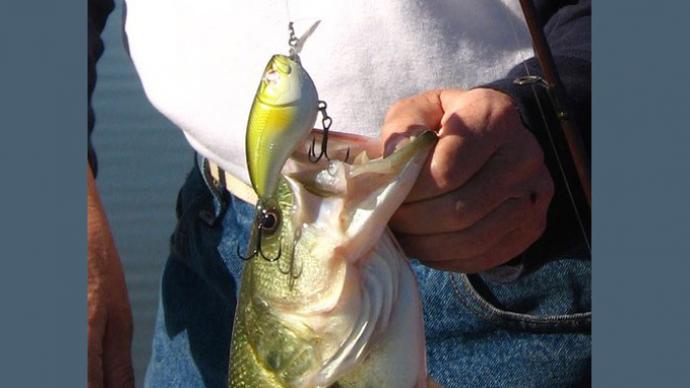Catfish don't have feelings, and it's good thing, too. With a face only a mother could love, and questionable reputation, catfish live a blue-collar existence. They go to work, mind their own business, and stay out of the spotlight.
While largemouth bass grace the covers of many national magazines, including Pond Boss, channel catfish stay in the trenches, doing what they do.
Just what do catfish do? Plenty. There are several catfish species common to U.S. ponds -- channel catfish, blue catfish, yellow cats, white cats, bullheads -- and each fills a slightly different niche in a pond environment. All told, the family Ictaluridae boasts 24 known species in north America. Of those, 16 species are bullheads, or madtoms.
Typically, pond managers use only two species. Channels and blues are the whiskerfish of choice for aquaculturists and pond managers alike. When ordering catfish at a local cafe, chances are, you will be eating channel cat. But for growing a monster fish in a pond, the blue cat might be the better choice.
All species have several common traits. Every one of them has skin rather than scales, tends to move at night and carries a set of barbers or "whiskers."
Catfish factoid: The whiskers on a catfish are covered with sensory tools that function like taste buds. Catfish can 'taste' their food, before eating it. I remember an old catfish fisherman telling me as a kid, "Catfish will bump your bait. Bump. Bump. Then, he'll run with it. Wait to set the hook until he runs." I'm no expert on how catfish hit an earthworm or a chicken liver, but they could be tasting the meal, before eating it.
A catfish's slender body shape allows for a quick getaway. That's their nature, to escape from trouble, not to confront it. Run away. When it's safe, come back.
Channel cats, especially, and to a lesser extent, blues, are rather skittish and flee from activity. When you fish for bass, noisy baits are good. But, if a channel cat is nearby, he'll likely run from it. That's not to say you won't catch an occasional catfish on artificial baits. But, catfish you catch will be big, and hungry. It's natural for catfish to run away, then ease back to investigate.
It's funny to listen to people around the country talk about catfish. In the northern states and the Midwest, channel cat are considered "trash fish." Bullheads are the norm, and folks love them. In the South, bullheads are "scavengers" and channels are the cat's meow.
Catfish, like most creatures, are products of what they eat and where they live.
Yellow catfish are often called "flatheads" or "Opelousas" cats. By any name, this heavy-duty bottom-dweller is the ultimate predator.
Flatheads, which may reach weights of 75 pounds or better, grow large and eat large. One of the old wive's tale that confuses pond owners from time to time is using yellow cat to control bullheads in private waters. Sure, yellow cat will eat mudcats. But the same yellow cat will also eat channel cats, bluegill, bass, most anything that swims.
A 50-pound flathead won't thumb his nose at a 3-pound bass. That's why we don't recommend stocking yellow cat in private ponds.
As for bullheads or madtoms, these species don't grow large. They spend much of their time with their heads in the mud, hence the nickname "mudcat."
These fish reproduce like rabbits, which results in large schools of tiny black catfish, swimming the perimeter of your pond, on the prowl, looking for something to eat. These creatures aren't used in pond management, and for good reason.
Bullheads spawn too much, don't grow very big, and compete with your favorite gamefish for food and space. Many natural watersheds across the U.S. have bullheads, so your pond may have bullheads, whether you stocked them or not.
In early years of pond management, I would recommend eradicating mudcats. Now, unless these creatures have overtaken a pond, we manage around them. Most bullheads don't live past age 3 or 4, anyway.
So, what roles do catfish play in a pond?
In most any pond, channel catfish can co-exist with bass. If you want a fish that fits a dinner plate, the channel cat's your fish. While most ponds can, with a little management, produce 50-75 pounds of bass, the same pond can grow 300-500 pounds of channel catfish. But, the bigger they grow, channels begin to compete in the food chain. Once channels grow larger than two pounds, they'll eat the same food as your highly touted largemouth.
Bass, however, will not eat pelleted rations, unless they have been trained to do so as fingerlings and sub-adults. Catfish gobble pellets. For the pond manager, this means catfish can be effectively removed from competition by feeding. Some folks just enjoy watching catfish come to feed, big whiskered faces vacuuming food off the surface like Momma's old Hoover.
Channel cats are easy to grow, and aren't likely to overpopulate. Since channels spawn late in spring, other fish have already done their deeds. So baby bass, baby bluegill, redear are already in place, competing for their spots in the food chain, before channel cats lay their eggs.
Catfish need to be hidden to lay their eggs. They must find a cavern, an eroded spot under the bank, inside a hollowed out tree trunk, or a tractor tire. Without a suitable spawning bed, the brooder female absorbs her eggs and goes back to work.
This leads to the misconception that channel cats will not spawn in a pond. They will, but conditions must be suitable.
When the habitat is right, channels lay eggs. Catfish eggs -- yellow ovals, about a third as big as a pencil eraser - - hatch within a week. This results in hundreds of little channel cat fry, yellow, soft, round.
As the yolk of the eggs shrinks into tummy, tiny quarter-inch channel cats go forth, to seek their misfortune. Once they leave their hiding place, juvenile channel cat usually find the mouth of a waiting sunfish. Small wonder channel cats have minimal spawning success.
For the pond owner, that's a good thing. Population control is a big deal. A pond manager must have control over the number of catfish.
For most ponds, I recommend that the owner/manager stock a few catfish, grow them up, catch them, stock more. This is sound catfish management, and good eating.
Blues spawn the same as channels. But, it may take a blue cat 3-5 years to mature sexually. Channels are ready at 1-2 years of age. Blues, compared to channels, are "Grey Poupon" catfish. High taste.
Look at it this way: Channel catfish are opportunistic omnivores. They eat like teenagers. Channel cat would rather eat meat, any time, but if vegetables are the only thing in the refrigerator, they'll eat vegetables. Blue cat will starve before eating moss. Blues are pure predators.
I remember, early 1980's a fishing club contacted me. They had leased a reservoir covering some 125 acres. Their complaint? Big blue cat were tearing up their fishing gear.
Club members wanted to know if the blue cat were interfering with our bass production. We launched the electro-fishing boat, set out experimental gill nets and put together two trotlines.
Several hours of sampling later, we had landed 15 giant blue cat, from 35- 50 pounds.
We cleaned each fish, analyzed stomach contents. The big blues had been eating crawfish, lots of bluegill. But the whole night was defined by the contents of one big blue -- a 3-pound bass. When the fishing club learned that big blues will indeed eat an adult bass, club members went catfishing, and it was not catch and release.
In most any pond, channels grow to 15 pounds, larger in some cases. Bigger yet, blues grow to the weight of a 7th-grade basketball player. A 60-70 pound blue is not uncommon. Keep in mind the needs of these fish. That's why you can't keep many giant fish in a small pond. They'll eat themselves out of house and home.
Several factors make catfish a good species for your pond:
- Channel catfish are readily available through most warmwater hatcheries around the nation. Very few hatcheries handle blues; none that I know target bullheads. As a result, channels are inexpensive to stock. Even an eating-size 1-pounder will cost only about $1-2 apiece.
- Catfish adapt to a wide variety of waterbodies, and often show a fairly high tolerance for changes in alkalinity, pH, temperature and dissolved oxygen.
- Hearty, catfish are relatively easy to haul from one reservoir to another.
- Channel cats grow fast, from fingerling to two pounds in 18 months, when fed. Better yet, their diets of natural prey may be supplemented with high protein pellets. We often recommend Purina Mills Game Fish Chow, in the floating pellet-style.
- Catfish do not occupy the same habitat or space as bass or bluegill. Nocturnal by nature, catfish tend to hover near the bottom, hiding, or searching for food.
Catfish in general may not be as pretty, or fight such a spectacular fight as trout or bass, but the channel cat in particular can play a positive role in pond management program.
Use catfish to your advantage. Or don't use them at all. You choose. Channel cats give you options, and that might be the best part of all.
Veteran fisheries biologist Bob Lusk runs Texoma Hatchery pond consulting service. He may be reached at 903-564-5372. His new book, "Raising Trophy Bass," may be purchased by calling 800-687-6075.
Reprinted with permission from Pond Boss Magazine



